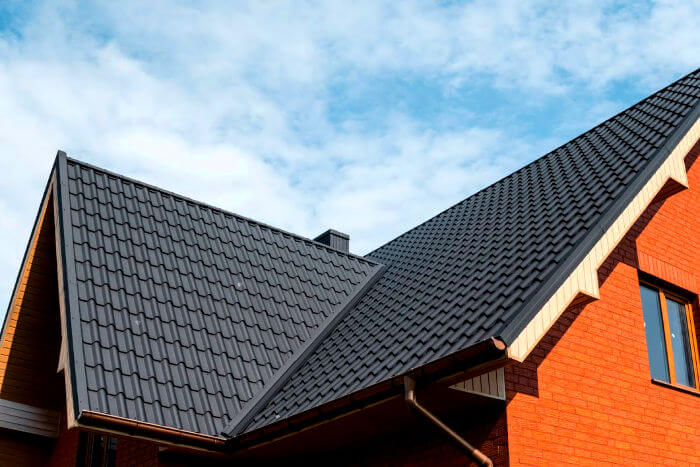Water Will Certainly Locate a Way In
Water marks on a ceiling, or worse, leaking water, may have you stressed that your whole roof covering remains in tatters. Yet just because there's a leakage doesn't suggest your roofing system will certainly call for an enormous quantity of repair work. Sometimes quiting it is as straightforward as filling a crack with caulk, replacing a couple of tiles, or mounting some blinking-- a membrane layer or layer of steel that offers a mechanical barrier to redirect water at corners, holes, spaces, and also other places prone to dripping.
Dropped tree limbs, hail storm, and even wind can loosen up or remove roof shingles. Harmed flashing is an additional typical culprit. Even rubberized boots around plumbing pipes, or with improperly installed dish antenna or photovoltaic panels can create separated leaks. To establish what kind of leakage you have actually jumped on your hands, first try to map it to its origin.
Searching for Leakages
It's easiest to find a leak when it's drizzling outside. Remember that water commonly builds up at a place that's different from where it's entering-- it normally diminishes the size of a rafter or stud and also just leaks once it gets to a low point.
In an unfinished attic room, the framing shows up, so simply begin at the leak and look along the length of any kind of wood framing that leads to that point, to see if you locate a trail of water that originates higher up on your roofing system. In an ended up attic, you'll need to use a handheld device called a stab saw to cut away any drywall that obstructs your sight. As soon as you assume you have actually found the origin, look at top of the roof (you can do this securely from the ground with a pair of field glasses) to see if you can determine any noticeable culprits, like missing shingles, or worn out blinking near a smokeshaft.
If you can not find the leak on your own, a licensed roofing contractor can carry out an examination and make referrals about whether fixing or replacement is required. Even if you're able to locate your own leak, you'll intend to leave the repair work to a pro-- climbing onto your roofing system with a tall expansion ladder is a dangerous task. Most leakages can be stopped if they're limited to a couple of areas. If, nevertheless, you're experiencing recurring leakages, and also your roofing runs out guarantee, it may be time for a new roof covering. The cash you would certainly spend on multiple temporary repairs is possibly much better related to a new roofing system with an extensive warranty.
Various Other Indication
You don't have to wait for leakages to appear before you take into consideration repairs to your roofing, though. Missing, harmed, or curling roof shingles can all be indications of leaks ahead. And also the age of your roofing system itself can be a guide-- homeowner's insurance provider normally think an asphalt roof shingles roof covering will certainly last about 20 years, and also some insurance companies won't provide coverage if your roof is older than that. If your roofing was placed on by the previous proprietor of your residence, a roofer or a qualified residence assessor can generally offer a harsh quote of the age, based upon the condition of the roof shingles.
Even without leakages or noticeable indicators of damage to the roofing, it can make sense to replace an out-of-warranty roof that's more than 20 years old. That's because as soon as a leakage develops, it can do severe damages to the wood sheathing underneath the shingles. And if that sheathing comes to be deformed or rotted, replacing it can include a number of thousand dollars to the general expense of your new roofing when you do navigate to replacing it. The picture listed below shows the various layers involved in a regular roofing.

Insurance Coverage
Before you employ anybody to work with your roof, call your house owner's insurance company to inspect your deductible as well as coverage for https://www.washingtonpost.com/newssearch/?query=Essex Fells Roofing roof fixings or substitute. You'll want to consider your out-of-pocket prices versus the cost of changing your roof covering totally. Think about any kind of resulting rise in your premium also-- it may make even more feeling to merely cover the expense yourself.
Typically, property owner's insurance coverage might cover, or add toward, the fixing of isolated leaks, but won't cover the cost of substitute. The majority of insurers will send out an insurance adjuster to give a quote for the repair service, as well as plans generally cover repair services to the roof, along with any damages to the framing, drywall, or flooring that arises from a dripping roof covering. If you do get a payout from your insurer, you can use that money to make Gikas Essex Fells Roofers the certain repair work, or apply it towards the expense of a total substitute.